Ilkeston Cam on Holiday
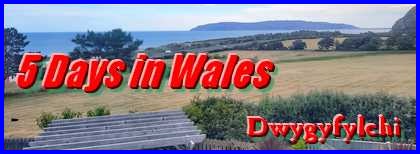
w/e 31 August 2025
All of this week's pictures were taken with a Nikon D3300
Part 05 - Conwy Bridges
Day three of our holiday and the East Midlands was basking in
the third heatwave of the summer. In North Wales however, there
was still a cool breeze but the sun was out, the sky was blue
and there was a vast improvement on the previous day in our holiday
weather as we made the short drive to Conwy.
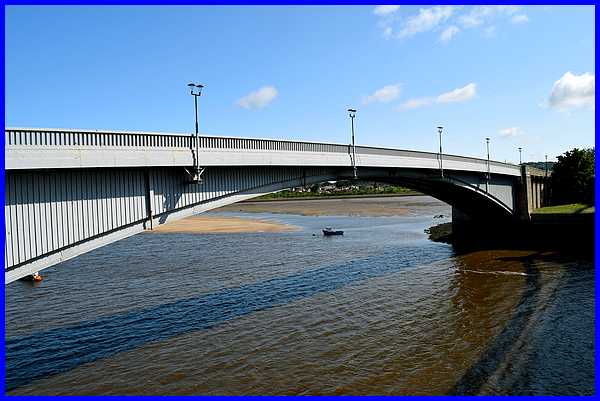
A few days before we set off to Dwygyfylchi, a vehicle fire in
the tunnel under the River Conwy had closed the route whilst
repairs were carried out. The tunnel had reopened when we arrived
but speed restrictions were still in place. An alternative route
could have taken us over this road bridge in Conwy had the tunnel
still been closed. The bridge was opened on December 13th, 1958
by the then Minister for Welsh Affairs, the Rt. Hon. Henry Brooke
M. P. A plaque, built into the bridge, records these details
along with the engineers, architect and contractors and it is
titled with the old English spelling - Conway Bridge.
|
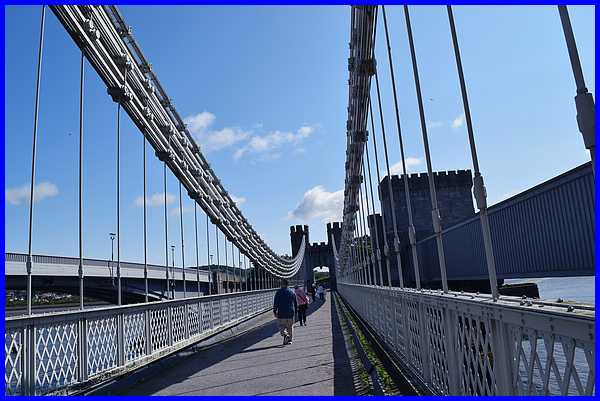
The now named Conwy Bridge is one of three that cross the river
side by side. The others are Stephenson's Tubular Railway
Bridge of 1848 with Telford's Suspension Bridge, built 1822 -
1826, between the other two.
|
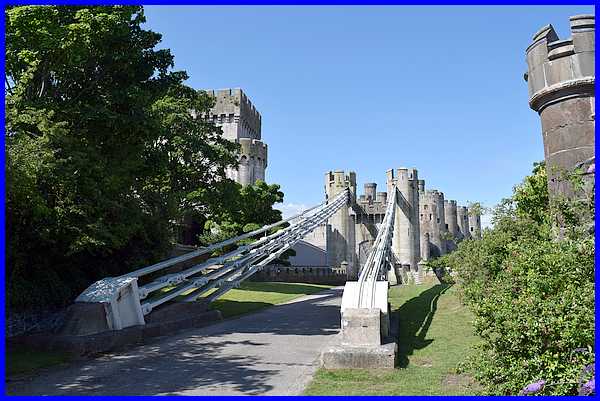
We walked across Telford's bridge and turned to look back at
the impressive structure with its supporting pillars that sympathetically
match Conwy Castle on the other side of the river.
|
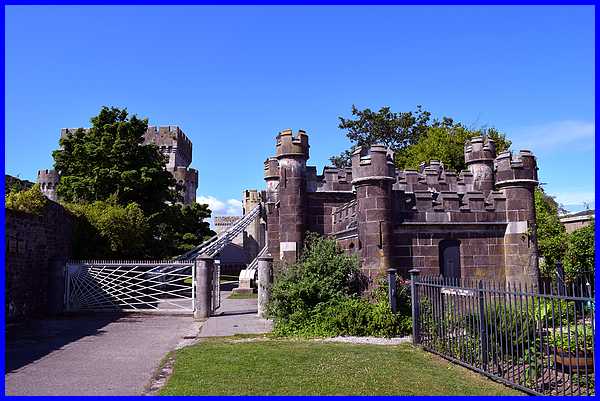
The former Toll Keeper's House too was built in the same style.
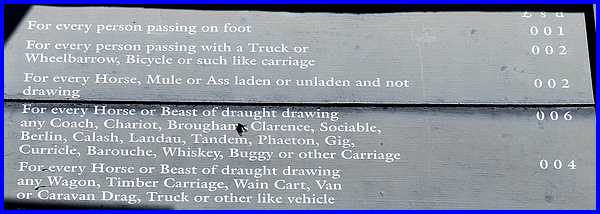
Our walk across the bridge was free of charge but years ago it
would have cost one whole penny per person.
|
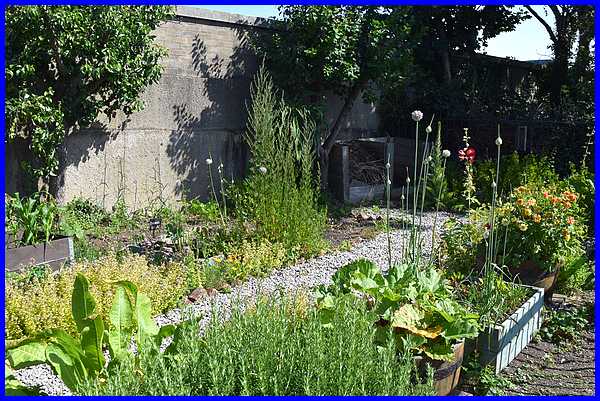
The Toll Keeper had a small garden adjacent to the house and
now a sign on the surrounding fence shows that it is the Incredible
Edible Toll House Garden. Incredible Edible is a group looking
after edible beds in Conwy and Llandudno Junction to provide
free fruit, herbs, and vegetables to the community.
|
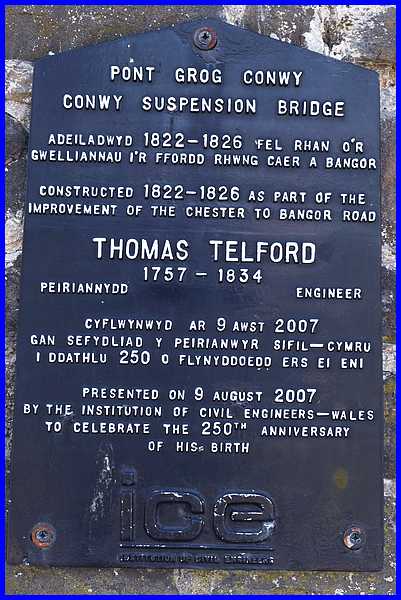
Across from the Toll House is a large notice on the wall marking
the 250th anniversary of Thomas Telford's birth in 1757.
|
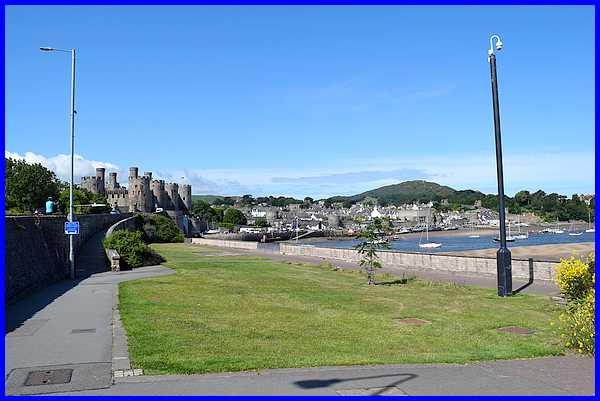
We continued along the path from the suspension bridge until
it merged with the road which we crossed to access the thin strip
of land that runs from the bridges to the Llandudno Junction
side of the estuary. This strip of land crossing the estuary
is known as the Conwy Cob.
|
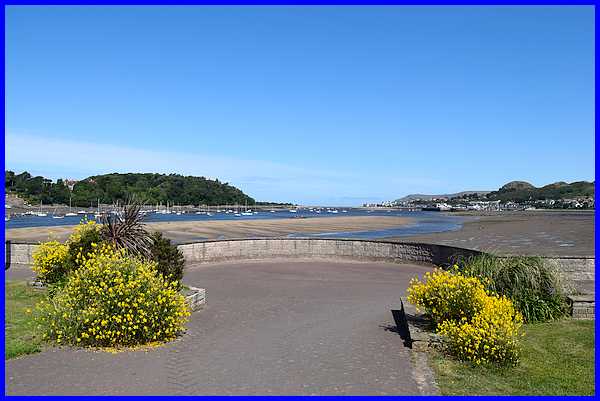
The view over the parapet wall goes beyond the estuary to the
open sea. A ramped path leads up from the Cob to the road bridge
and over the river.
|
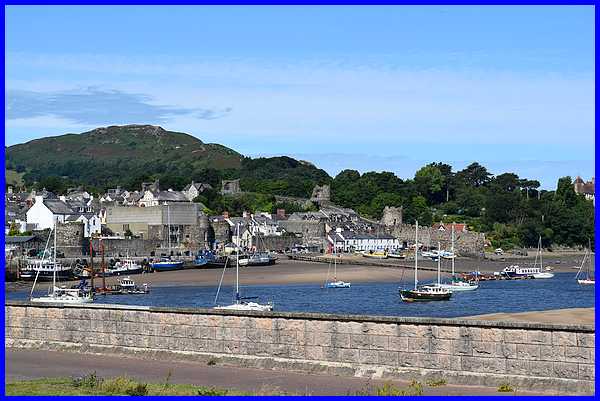
There is also a good view from the Cob of the quay, which we
would return to later, and the ancient walls that surround the
town.
|
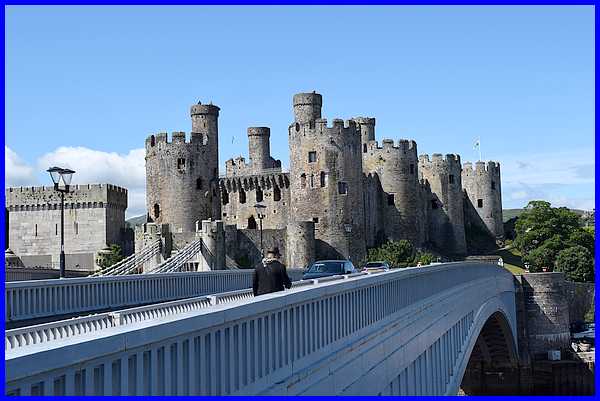
But the one thing of course that overshadows all three bridges
is Conwy Castle. Built in an incredible four years between 1283
and 1287 in the reign of King Edward I it remains one of Wales'
great mediaeval buildings.
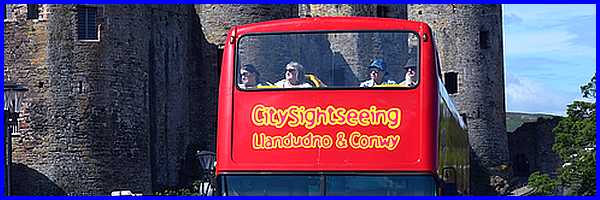
As we crossed the bridge heading for the town a double decker
bus was going in the opposite direction carrying sightseers.
Despite the lettering on the front of the bus, neither Conwy
nor Llandudno are cities!
Continued in Part 06 - Conwy Buildings
|














